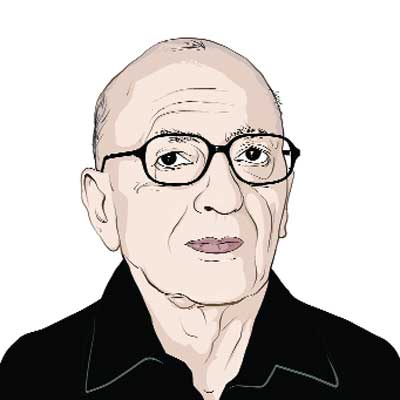Opinion When in doubt,amend
The final round in the fight over the Constitutions basic structure
Neither the Supreme Courts basic structure judgment nor Indira Gandhis supersession of judges nor even the proclamation of the Emergency (IE,August 7) halted the struggle for supremacy between Parliament and the Supreme Court. On the contrary,the changed circumstances the suspension of democracy,censorship on the press and so on helped escalate the fierce conflict.
Unsurprisingly,the new Chief Justice,A.N. Ray,promoted over the heads of three judges senior to him,appeared to go along with the government in its game. As it happened,in August 1975,in what has come to be known as the Election case,the Supreme Court reaffirmed the basic structure doctrine first propounded in the famous Kesavananda Bharti judgment two years earlier. Precisely three days after the reaffirmation,Chief Justice Ray constituted a 13-judge bench to overturn the Kesavananda judgment,and thus the doctrine that had restored equilibrium of sorts between two of the three pillars on which rests the constitutional edifice. For this purpose,he invoked some petitions,including one by the Tamil Nadu government.
Ironically,this move turned into acute embarrassment to Ray and to those supporting him. When the hearings began,Attorney-General Niren De argued that the difficulties (in passing legislation for socio-economic reform) and confusion had to be removed. Justice H. R. Khanna questioned this from the bench. However,it was Nani Palkhivala,most eminent in the galaxy of legal luminaries arrayed against the chief justice,who demolished the whole enterprise the next day. He cited the sweeping and repressive Forty-first Amendment,enacted behind the ramparts of the Emergency,as an example of what would prevail were the basic structure doctrine abandoned. Palkhivala then delivered the coup de grace. The review of Kesavananda,he said,couldnt be entertained on an oral request of the government. Ray responded that the request for review had come from petitioners. Even the TN government had asked for a review.
At this stage,the Tamil Nadu Advocate-General,Govind Swaminathan,jumped up to say,We never even once asked for a review. D. D. Thakur,Kashmirs law minister,under instructions from Sheikh Abdullah,who had returned as the states chief minister a few months earlier,also opposed any review of Kesavananda. Within 24 hours Ray dissolved the bench he had convened. But this by no means ended the matter.
For,with absolute power in her hands and all institutions of democracy suborned or silenced,Indira Gandhis government went on a spree of amending the Constitution and even deleting some of its inconvenient provisions. To do away with the doctrine that the basic structure was beyond Parliaments amending powers was understandably one of the many objectives of these amending bills,which a pliant Parliament,in the absence of imprisoned Opposition leaders,passed with alacrity. Even the Supreme Courts attitude was supine. Its judgment in the Habeas Corpus case in April 1976 reflected this most vividly.
With only Justice Khanna dissenting,the court held that in the light of the Emergency,no citizen had a right to challenge a detention order as illegal or faulty or mala fide. It also held as valid even that provision of the Maintenance of Internal Security Act (MISA) that authorised the government not to reveal,where necessary,detention grounds .
Of the changes in the Constitution during the Emergency era,the most important and most drastic was the Forty-second Amendment. Its four main purposes can be summed up as follows. First,to further protect Indira Gandhis election to Parliament and future elections of her and her successors,even though her 1971 election had already been saved by earlier amendments. The same immunity was,of course,extended to the President,the vice-president and the speaker. Many called it a convenient camouflage. Mercifully,a bizarre amendment,conferring on the four dignitaries lifelong immunity from civil or criminal prosecution was dropped after it was passed by the Lok Sabha but had yet to be sent to the Rajya Sabha.
Secondly,the 42nd Amendment enlarged the Central governments powers vis-à-vis State governments thus eroding the federal structure. Thirdly,in the words of one supporter of the measure,it trimmed the judiciary in many respects. Fourthly,the amending law gave directive principles of state policy precedence over fundamental rights and made any law passed in pursuance of a directive principle immune from the Supreme Courts scrutiny.
All this was the law of the land when Indira Gandhi lost the 1977 general election and the Janata,the first non-Congress government in New Delhi in 30 years,came to power. Pursuing its election manifesto,the Janata government embarked on a programme to restore the Constitution to the condition it was in before the Emergency and to put rigorous restrictions on the executives emergency and analogous powers. In this resolve the Janata succeeded substantially but not fully. This was so because to see the Forty-fourth Amendment through by the requisite two-thirds majority,it needed the support of the Congress that had by then split into two again between those with Indira Gandhi and others opposed to her. Congress members of both hues went along with the Janata on many matters but refused on some. For instance,the precedence given to directive principles over fundamental rights survived,as did the exclusion of socio-economic laws from judicial review.
Interestingly,in the final vote on the 44th Amendment on December 7,1978,Desai and Indira Gandhi voted on the same side. She was re-elected to the Lok Sabha a month earlier and was expelled and briefly imprisoned a few days later!
The question whether the Constitution,as it had emerged from 42nd and 44th Amendments was in consonance with the basic structure doctrine was still open. The famous Minerva Mills case settled it. This case had reached the Supreme Court when Charan Singh was caretaker prime minister. The apex court delivered its judgment in May 1980 when Indira Gandhi was back in power. The court endorsed the basic structure doctrine yet again,and threw out some of the surviving features of the 42nd Amendment. This time around she did nothing to oppose the verdict that was widely welcomed by the country.
The writer is a Delhi-based political commentator




